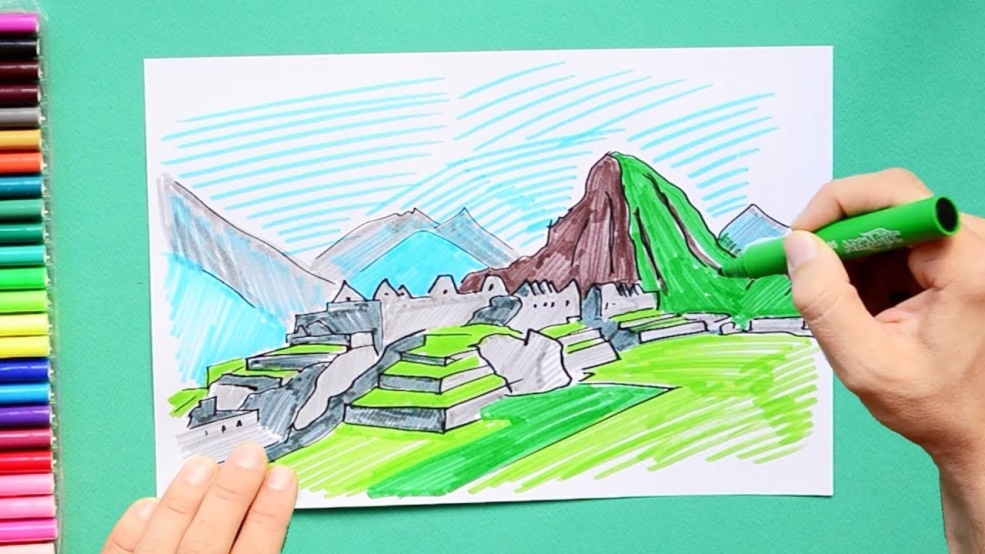Drawing is a delightful and fulfilling activity that anyone can enjoy, regardless of skill level. Whether you’re just starting out or looking for some quick and simple projects to boost your confidence, easy drawings are a great way to dive into the world of art. In this article, we’ll explore a variety of Artlsdtsryc5ha= Easy Drawings ideas, tips, and techniques that will help you get started and keep you motivated to continue improving your skills.
Why Start with Easy Drawings?
Starting with easy drawings allows beginners to build a solid foundation without feeling overwhelmed. Simple drawings focus on basic shapes, lines, and patterns, making them perfect for developing hand-eye coordination, improving your understanding of proportion, and getting comfortable with various drawing tools. Easy drawings are also quick and satisfying, providing a sense of accomplishment that encourages further practice.
1. Getting Started with Basic Shapes
Almost all drawings start with basic shapes like circles, squares, triangles, and rectangles. These shapes are the building blocks of more complex images, and mastering them is crucial for any budding artist. Start by practicing drawing these shapes freehand, aiming for consistency and precision.
- Circles: Begin by drawing circles of different sizes. Practice making them as round as possible without the help of any tools.
- Squares and Rectangles: Focus on drawing straight lines to form squares and rectangles. Try varying the sizes and experimenting with different orientations.
- Triangles: Practice drawing equilateral, isosceles, and right-angled triangles. These shapes are often used as the foundation for drawing more complex objects.
Once you feel comfortable with basic shapes, try combining them to create simple drawings like houses, trees, and animals.
2. Easy Drawing Ideas for Beginners
When you’re new to drawing, it’s helpful to start with subjects that are easy to understand and replicate. Here are some beginner-friendly drawing ideas that will help you practice and develop your skills:
A. Cute Animals
Drawing animals is always a fun and rewarding experience, and there are plenty of easy animals to start with. Begin with simple, stylized versions of these animals to make the process more approachable.
- Cat: Start by drawing a large circle for the head and smaller circles for the body. Add pointy ears, a tail, and whiskers to complete the look.
- Dog: Draw a similar shape to the cat, but with floppy ears and a longer snout. Don’t forget the wagging tail!
- Fish: Begin with an oval shape for the body and add a triangle for the tail. Draw some fins and a small eye to complete your fish.
- Bird: Draw a small circle for the head and an oval for the body. Add a beak, wings, and tail feathers to bring your bird to life.
B. Simple Landscapes
Landscapes are a great way to practice drawing scenes and learning about perspective. Start with easy and straightforward landscapes that don’t require complex details.
- Sunset: Draw a simple horizon line and add a large circle for the sun. Use curved lines to create the sky and add a few clouds or birds for extra detail.
- Mountain Range: Draw overlapping triangles to represent mountains. Add a river or some trees in the foreground for added depth.
- Beach Scene: Draw a wavy line for the shoreline and add a few palm trees. You can also sketch a sun in the sky and some seashells on the sand.
C. Everyday Objects
Drawing everyday objects is a great way to improve your observational skills and learn about different shapes and forms.
- Cup: Start with a simple cylinder shape for the body of the cup. Add a handle and some shading to make it look more three-dimensional.
- Books: Draw a few rectangles stacked on top of each other. Add some details like book titles or bookmarks to make your drawing more interesting.
- Chair: Begin with a rectangle for the seat and add four straight lines for the legs. Draw the backrest and any other details you see on a typical chair.
D. Patterns and Doodles
Patterns and doodles are a fun way to practice your drawing skills without the pressure of creating a realistic image. They’re also great for relaxing and letting your creativity flow.
- Zentangles: Create intricate patterns by combining simple shapes and lines. Start with a basic grid and fill each section with a different pattern.
- Mandalas: Draw a series of concentric circles and divide them into sections. Fill each section with different shapes and patterns to create a beautiful mandala.
- Doodles: Let your imagination run wild and draw whatever comes to mind. Doodles can be anything from simple shapes to more complex scenes.
3. Tips for Improving Your Drawing Skills
As you continue to practice easy drawings, you’ll start to see improvement in your skills. Here are some tips to help you get the most out of your practice:
A. Use Reference Images
Using reference images is a great way to learn how to draw accurately. Find pictures of the subjects you want to draw and use them as a guide. Pay attention to the shapes, proportions, and details in the image and try to replicate them in your drawing.
B. Start Light and Build Up
When starting a new drawing, use light, loose lines to sketch out the basic shapes and proportions. Once you’re happy with the overall structure, you can go back and darken the lines, add details, and apply shading. This technique helps you avoid mistakes and gives you more flexibility as you refine your drawing.
C. Practice Regularly
The key to improving your drawing skills is consistent practice. Set aside time each day to draw, even if it’s just for a few minutes. The more you practice, the more confident you’ll become in your abilities.
D. Experiment with Different Tools
While pencils are the most common drawing tool, don’t be afraid to experiment with other materials like pens, markers, or charcoal. Each medium has its own unique qualities, and trying different tools can help you discover new techniques and styles.
E. Don’t Be Afraid to Make Mistakes
Remember, every artist makes mistakes, and that’s okay! Mistakes are an important part of the learning process. Instead of getting frustrated, use them as an opportunity to learn and improve. Over time, you’ll find that your mistakes become less frequent, and your drawings become more refined.
4. Moving Beyond Easy Drawings
Once you feel comfortable with easy drawings, challenge yourself by tackling more complex subjects. Start by adding more details to your simple drawings or experimenting with new styles and techniques. You can also try drawing from life, which involves sketching real objects or scenes instead of working from reference images.
As you progress, consider joining a drawing class or finding a community of fellow artists to share your work with. Getting feedback from others can help you see your drawings from a new perspective and provide valuable insights for improvement.
Conclusion
Easy drawings are a fantastic way to begin your journey into the world of art. They help you build essential skills, boost your confidence, and most importantly, keep the process enjoyable. By starting with simple subjects and gradually challenging yourself with more complex drawings, you’ll see significant improvements in your abilities over time. So grab your sketchbook, pick an idea from this guide, and start drawing today!

